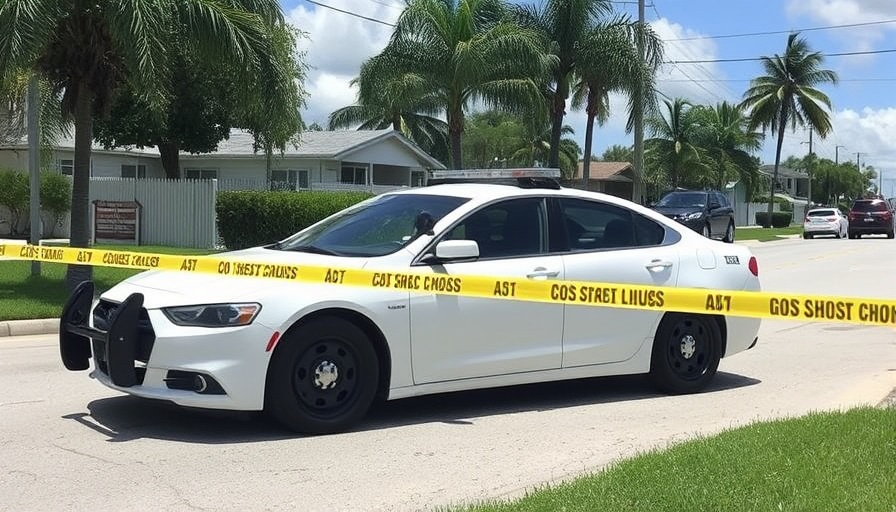
Tragic Incident in Miami-Dade: A Traffic Stop Turns Fatal
In a shocking incident this week, Miami-Dade County became the center of a serious and tragic police shooting that left one man dead following an attempted traffic stop. Kristofer Lazaro Laboy, a 24-year-old resident, was identified by authorities as the man shot by a deputy from the Miami-Dade Sheriff's Office (MDSO), bringing into focus the complexities of law enforcement interactions in urban settings.
What Happened During the Traffic Stop?
The event unfolded when deputies from the MDSO’s Robbery Interventions Detail team attempted to pull over a yellow Corvette for having illegal dark tints. Reports indicate that rather than complying, Laboy accelerated away, a decision that initiated a police pursuit. The incident escalated quickly, with law enforcement utilizing air support to track the vehicle to a dead-end at an apartment complex.
Confrontation at the Scene
Authorities reported that when Laboy exited his vehicle, he was armed and allegedly approached the deputies' vehicle, prompting one deputy, identified as Kelvin Cox, to fire his weapon. Laboy was pronounced dead at the scene, and a firearm was later discovered nearby.
The Fallout: An Unnecessary Tragedy?
MDSO's Public Information Officer Argemis Colome emphasized in a statement, "This could have just been a citation and everyone would have gone home." This commentary captures the gravity of the situation, underscoring how such encounters could lead to deadly outcomes even when the initial offense may seem minor. The implications resonate strongly in a community already grappling with tensions surrounding policing practices.
The Investigation: What Comes Next?
MDSO has placed Deputy Cox on paid administrative leave, following established procedures in officer-involved shootings. Meanwhile, the Florida Department of Law Enforcement (FDLE) is investigating the shooting, a step that aims to bring transparency to the incident and justify the use of deadly force. The probe will look at the circumstances leading up to the encounter and whether Cox's actions were warranted.
Emotional Parallels: The Impact on Miami’s Community
This incident isn't an isolated one but reflects a broader narrative on police interactions that have affected many communities, particularly in urban environments like Miami. The tensions surrounding police use of force, particularly involving young adults, ignite heated discussions about race, legality, and law enforcement training. Residents fear escalations could lead to more tragic outcomes, while advocates call for better community-police relations.
Future Implications: Could this Have Been Prevented?
The consequences of such incidents raise essential questions about police strategy. Could better training or alternative dispute resolution methods have resulted in a different outcome? How law enforcement agencies across the country adapt and evolve their protocols in response to such incidents remains a significant consideration for lawmakers and citizens alike.
How Tourists Can Engage With the City Responsibly
As tourists flock to the vibrant streets of Miami, understanding the local climate is crucial. Visitors must be cognizant of the unique tensions that can surface in urban areas, emphasizing the importance of following traffic regulations and remaining compliant with law enforcement directives. Engaging positively with the community can foster a respectful relationship between visitors and residents.
Call to Action: Understanding and Dialogue Needed
The death of Kristofer Laboy serves as a stark reminder of the ongoing challenges facing police and communities across the United States. As discussions continue about policing reforms, it is essential for both residents and visitors to engage in constructive dialogue about safety, accountability, and community welfare.
 Add Row
Add Row  Add
Add 



Write A Comment